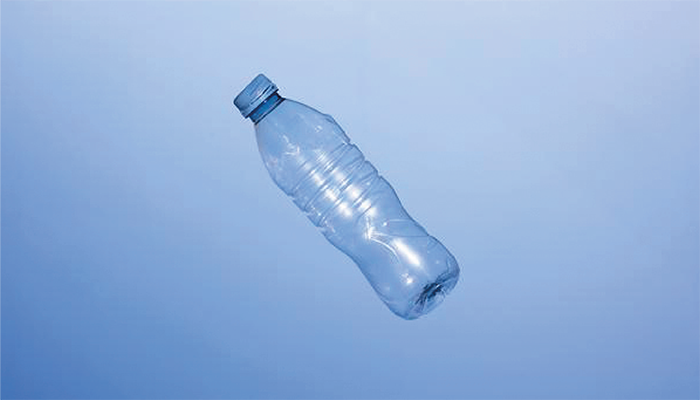
Not all plastics are the same. When it comes to recycling, it is important to find out exactly which material you are dealing with. A newly developed method could help to achieve this.
Credit: RUB, Kramer
A new hyperspectral imaging approach based on near-infrared (NIR) light could enable real-time environmental monitoring at low cost and high resolution, according to researchers in Germany. Described in Advanced Science, the HyperNIR system allows fast, label-free chemical imaging of materials, including plastics and plant tissue, using standard NIR cameras and commercially available optical components.
The technique was developed by a team at Ruhr University Bochum and the Fraunhofer Institute for Microelectronic Circuits and Systems. It combines spectral and spatial information into “phasor” plots, allowing the discrimination of materials based on their spectral fingerprints with just three images – a substantial increase in speed over conventional hyperspectral imaging methods, which typically require time-consuming scanning.
“Using this technique, the ability to analyze different materials and their properties in real time can considerably increase the efficiency of processes in environmental monitoring,” said co-author Sebastian Kruss in a press statement from Ruhr-University Bochum.
The system operates by modifying a standard InGaAs NIR camera with a compact optical module consisting of two polarizers and a liquid crystal variable retarder (LCVR). This arrangement allows sine- and cosine-shaped spectral filtering that maps the incoming optical signal into a two-dimensional phasor space. Spectral information for each pixel is then extracted without requiring computational reconstruction, enabling real-time image processing in less than 5 milliseconds per hyperspectral frame.
In testing, the HyperNIR setup successfully distinguished between two plastics – polyethylene and polyamide – based on small differences in their reflectance spectra between 1400 and 1600 nm. It was also used to track water uptake in pepper plants in real time without contact or dyes, using the absorption features of water around 1450 nm.
“This system offers a tunable and cost-effective solution for label-free NIR imaging, with potential applications in recycling, agriculture, and biomedical diagnostics,” the authors write.
The team emphasizes the system’s compatibility with existing NIR cameras and standard lab infrastructure, making it accessible to a broader research and industrial user base. According to the paper, the entire HyperNIR module can be assembled for under €2,000.
In the lab, the setup achieved frame rates of 0.2 hyperspectral cubes per second – limited by the switching speed of the LCVR – while maintaining high spatial resolution and sensitivity. The researchers suggest that further improvements in retarder switching speed and integration with drone platforms could extend its use in precision agriculture and large-scale monitoring.
While existing hyperspectral imaging techniques often require a trade-off between speed, resolution, and hardware complexity, the HyperNIR system sidesteps some of these limitations by simplifying both optics and computation.
Looking ahead, the authors anticipate expanding the spectral range and exploring applications in biomedical fluorescence imaging using NIR-emitting nanomaterials. As Kruss noted, “Integrating the process into drones could help to solve pressing environmental issues in the field of agriculture by opening up a new dimension in data collection and analysis.”




